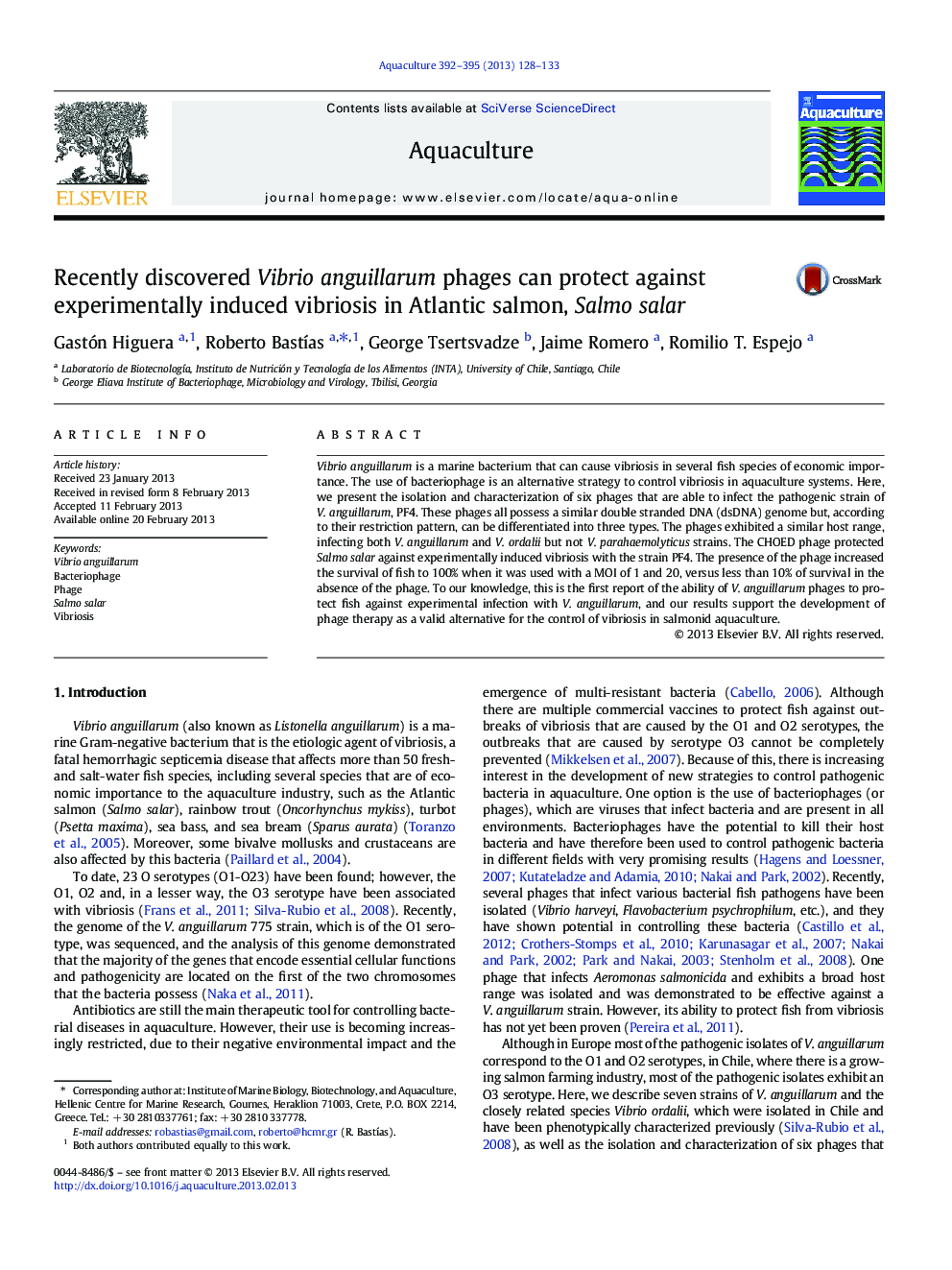| Article ID | Journal | Published Year | Pages | File Type |
|---|---|---|---|---|
| 2422181 | Aquaculture | 2013 | 6 Pages |
Vibrio anguillarum is a marine bacterium that can cause vibriosis in several fish species of economic importance. The use of bacteriophage is an alternative strategy to control vibriosis in aquaculture systems. Here, we present the isolation and characterization of six phages that are able to infect the pathogenic strain of V. anguillarum, PF4. These phages all possess a similar double stranded DNA (dsDNA) genome but, according to their restriction pattern, can be differentiated into three types. The phages exhibited a similar host range, infecting both V. anguillarum and V. ordalii but not V. parahaemolyticus strains. The CHOED phage protected Salmo salar against experimentally induced vibriosis with the strain PF4. The presence of the phage increased the survival of fish to 100% when it was used with a MOI of 1 and 20, versus less than 10% of survival in the absence of the phage. To our knowledge, this is the first report of the ability of V. anguillarum phages to protect fish against experimental infection with V. anguillarum, and our results support the development of phage therapy as a valid alternative for the control of vibriosis in salmonid aquaculture.
► Isolation and initial characterization of Vibrio anguillarum phages. ► Protection against experimentally induced vibriosis in S. salar using phages. ► Protection in both small- and medium-scale challenges using phages.
